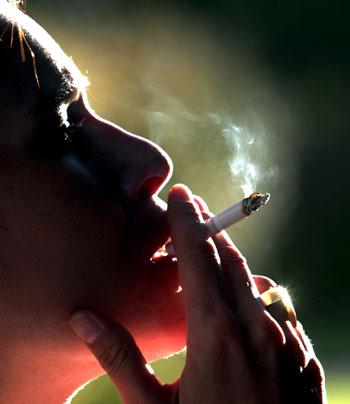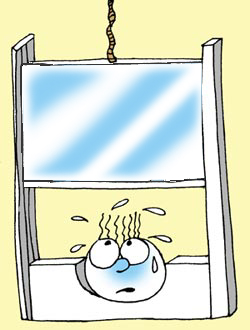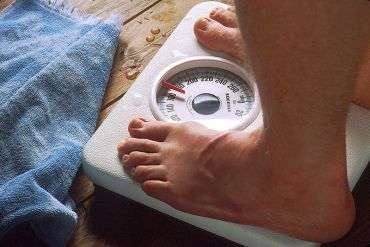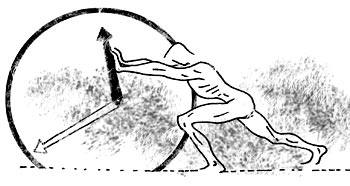
Abhishek Mande finds out how real this health threat is, how to identify and avoid it.
Dr Prabhakar Shetty found himself examining a 31-year-old comatose patient at the Columbia Asia Hospital in Yeshwantpur, Bengaluru.
The young man had suffered a stroke.
"The main artery going to his brain had developed blood clots," says Dr Shetty. "He had a history of previous blood clot formation in the legs and was prone to it. But his smoking habit had compounded the problem."
Young people suffering from stroke is not uncommon in India any more, says Dr Sheety.
"The threat is quite real," observes Dr Shyamal K Das from the Bangur Institute of Neurology in Kolkata.
Dr Das has conducted an extensive community-based study of stroke patients in Kolkata.
He points out that over 8 per cent of the total stroke cases he has studied affect the young -- "largely men below the age of 40 years."
Neurologist Dr Sunanda Anand, who practices in Mumbai, agrees. "It is safe to say that one in every four stroke patients I treat are under 40," she says, adding that stroke is the most common cause of morbidity today.
All of them point to the drastic lifestyle of today's youngsters -- high-pressure jobs, smoking, alcohol and a sedentary routine among other things -- as the causes.
What is a stroke?
Simply put, a stroke or a brain attack is a sudden impairment in the functioning of the brain.
A blockage in the arteries or veins or the rupturing of a blood vessel can cause such a condition.
Dr Das says, "Strokes can be ischemic, caused by the lack of blood flow to the brain due to clots, or hemorrhagic, caused by a ruptured blood vessel."
Between the two, the more common type of stroke is ischemic, when a clot can be formed in the main artery of the brain, or if a clot or an air bubble formed in another part of the body is carried through the bloodstream into the brain.
Says Dr Anand, "In case of a heart attack, you can still return to normal life. But a stroke patient does not always return to normal. It can be traumatic not just for the patient but also her/his family."

The causes of a stroke are many. While some of them can be genetic, others are largely self-created.
Says Dr Das: "Uncontrolled hypertension is the single most common cause for Hemorrhagic strokes. An Ischemic stroke, on the other hand, can be the result of a variety of factors:

Dr Puneet Saxena, an associate professor in the medicine department at the Sawai ManSingh Medical College, Jaipur, provides us with tips:

As Dr Shyamal Das suggests, very often it isn't just the patients who ignore the warning signs -- even general practitioners miss them entirely.
If you happen to suffer from chronic headaches, a visit to a specialist is a must. Dr Das also recommends getting one's sugar and blood pressure tested immediately.
In fact, a study conducted at the University of Rochester Medical Centre in New York even suggests that the damage to tissue that occurs during a migraine attack is the same as the damage occurring in a transient ischemic attack, which starves parts of the brain of oxygen.
A transient ischemic attack or 'mini-stroke' is a classic red flag that simply must not be ignored.
According to a report published in Neurology, the scientific journal of the American Academy of Neurology, a person may suffer a mini-stroke as much as a week before the actual attack.
A 'mini-stroke' has all the symptoms of a full-blown stroke but does not last longer than a few minutes and does not cause an injury to the brain.
According to Dr Das, typical symptoms include:
"A hemorrhagic stroke can be preceded by severe and persistent headache, vomiting, convulsions, loss of consciousness, paralysis on one side of the body and speech or language impairment," he says.

"F is for Face: If you find someone looking uncomfortable, ask him/her to smile. A smile is usually symmetrical. If the person is affected, one side of the lips will droop. This means that one side of the patient's body is getting paralysed.
A is for Arms: Get the person to hold out her/his arms at 90 degrees from the body. If one of the arms drops, it is time to rush him/her to hospital.
S is for Speech: Get the person to talk. Pay attention to the way s/he speaks. Slurred speech is a classic warning sign.
T is for Time: If the person exhinits one or all the above symptoms, you must rush her/him to a well-equipped hospital. Time is crucial, as in the case of a stroke, medication can prove ineffective after a certain period of time."
The human brain, as they say, is more complicated than we dare to imagine. But all it takes is a few simple precautions to keep related health scares at bay.